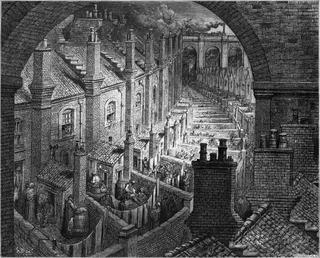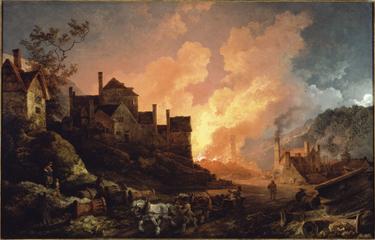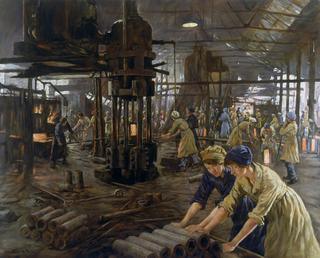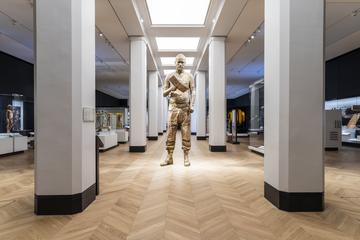
Building retaining wall near Park Street
- PART OF:
- London and Birmingham Railway
- maker:
- John Cooke Bourne
- publisher:
- Ackermann and Company and Charles Tilt




print. lithograph (buff and black). 'Building retaining wall near Park Street' / by John Cooke Bourne, 1839, Plate VI from "Drawings of the London and Birmingham Railway" published London: JC Bourne,... Ackermann & Co,... C Tilt. on sheet 38x55cm
This lithograph depicts the Camden Town ‘cutting’ — a type of excavation that carves a route through rock or dirt. The retaining wall that we can see being built holds the earth beyond the cutting back. In his 1848 novel ‘Dombey and Son’, Charles Dickens describes the impact of the construction work on the Camden Town neighbourhood: ‘Houses knocked down …. Streets broken through … deep pits and trenches dug in the ground … enormous heaps of earth and clay thrown up …In short, the yet unfinished and unopened railroad was in progress, and from the very core of all this disorder, it trailed smoothly away, upon its mighty course of civilisation and improvement’. At first glance, this lithograph conveys an impression of disorder, but a closer look reveals a sequence of separate tasks taking place, each self-contained and under control — from which order will eventually emerge.
Most railway prints from this period produced neat and ordered views. Figures, if they appeared at all, were either groups of the admiring well-to-do, or rustic peasants standing idly at the side of the line. In Bourne’s depictions, by contrast, each figure has both function and purpose. Navvies are shown in characteristic postures: working with tools, with their bare hands, and talking, supervising, resting. Bourne’s works provide a reminder that it was human labour above all else that built the railway system. He is unusual in this regard — few if any of the numerous other artists who depicted the railways in the 1830s and 1840s provided such a detailed view of the construction work.
When construction of the London and Birmingham Railway began less than a mile from his home, John Cooke Bourne, like many people, was fascinated. He began to execute drawings of the excavations taking place on the southern part of the line between Euston and Primrose Hill Tunnel. At first these were purely for his own interest, but as they increased in number Bourne sent examples to the noted antiquarian and topographer John Britton. Britton was impressed with the drawings, and as a railway supporter he believed their publication would help to win over people sceptical of the railways. 36 of Bourne’s wash drawings were chosen for publication, appearing first in a four-part ‘Series of Lithographed Drawings on the London and Birmingham Railway’ (1838–1839), priced at 1 guinea per part. The 4 parts were later re-issued as a single volume under the title ‘Drawings of the London and Birmingham Railway’. This lithograph is from that series.
The lithograph series was published by Ackermann. The firm’s Anglo-German founder, Rudolph Ackermann, was an early adopter of lithographs. He began to publish them in 1816, making Ackermann the first significant lithographic press in England. The firm played an important part in popularizing the new print medium. Ackermann had found out about lithography from its inventor, Alois Senefelder, who was a friend of a friend.
It has been estimated that no fewer than 2,000 prints of railway subjects were produced during the years 1830 to the late 1840s, and scarcely a line opened without at least one view of its engineering accomplishments being published. It is difficult for us today to understand the emotional as well as financial commitment to railways during these early years. The railway was often seen as a slowly spreading symbol of change and progress towards a better world.




